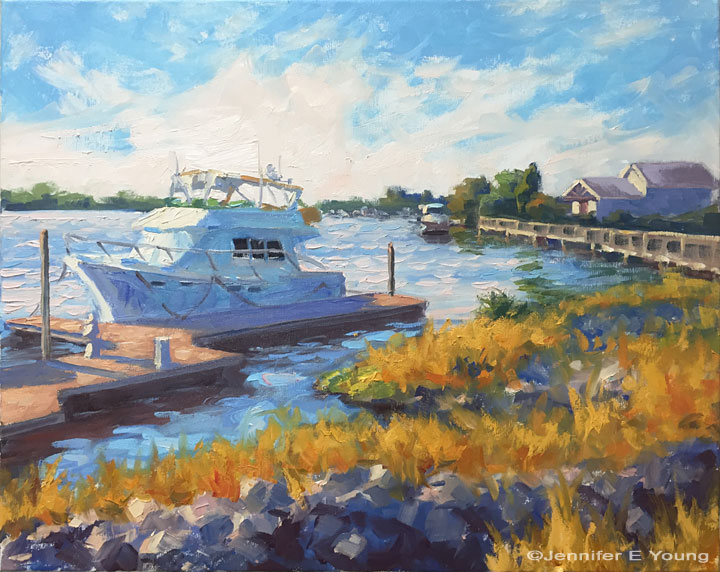Plein Air to Studio
/Though I have a great love for plein air painting and do it as often as my time and circumstances allow, I have, out of necessity, become much more of a studio painter these last few years. Working on location is like painting calisthenics. It demands one's full concentration, advance planning, additional travel time, and a good amount of in-the-moment ingenuity in order to capture the particular color notes and light effects of that point in time. As with physical exercise, I get both an exhilarating rush and a bit of a drain afterwards.
5:30 a.m. wake-up time ensured that I captured this sunrise in all of its colorful glory. As you can see, all of that color was long gone when I photographed the setting at around 7 a.m.
While I love the spontaneity in my plein air work, my studio work has its advantages. For one I can be more deliberate. Without the limitations imposed by time and changing light, I can go larger in the studio, and at times, improve on my drawing and composition. I can also experiment more easily with various formats, color combinations, and other formal aspects of 2D artistry.
While I have been engaged in both practices for many years now, I want to do more to relate the two disciplines to each other in a more purposeful way. Part of the reason I haven't always managed this is because I tend to consign my plein air paintings to galleries almost immediately after I complete them, which means I am separated from them for either the length of the consignment, or forever if the painting is sold outright. I do have photographs of all of my plein air paintings as well as photographs of the location (though as you can see above, the latter often tells me very little about the true color I saw in the moment.)
Therefore I'm making a concerted effort to do more plein-air to studio paintings, using the actual plein air paintings as my primary reference when at all possible. Here's my most recent effort:
Here's my setup, in progress. I used my tablet holder to prop up my plein air painting so that both pieces would be under the same light for better color accuracy. It actually worked very well. Necessity is indeed the mother of invention! :)




















